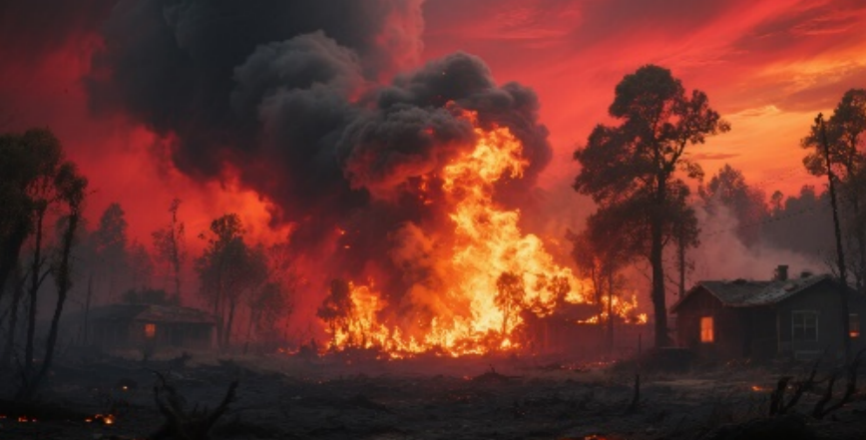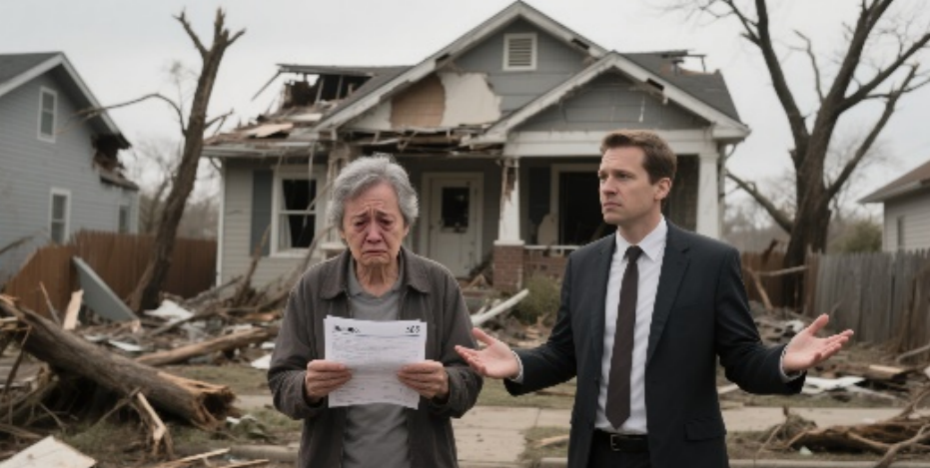Climate Change and Insurance: Why Homeowners Are Struggling to Get Coverage

In coastal Florida and wildfire-prone California, a quiet insurance crisis is unfolding. Homeowners in regions battered by hurricanes, wildfires, and floods face soaring premiums, canceled policies, and outright denial of coverage—a direct result of climate change escalating natural disaster costs. This article explores how worsening catastrophes strain traditional insurance models, creating "protection gaps" for millions, and examines innovative tools emerging to bridge the divide.
The Escalating Cost of Climate-Related Disasters
Since 2000, the United States has endured 362 weather and climate disasters, each inflicting economic losses exceeding $1 billion, with cumulative damages reaching $2.6 trillion—triple the inflation-adjusted costs incurred during the preceding two decades . Driven by Hurricane Idalia’s $75 billion toll and California’s catastrophic wildfire season, insurers faced an unprecedented payout of $150 billion in catastrophe claims in 2023 . This escalation has precipitated a marked compression of profitability: property-casualty insurers reported a combined ratio (total losses and expenses relative to premiums) of 112% in 2023, signifying a $1.12 loss for every $1 earned .The impact on homeowners is acute. In Florida, average windstorm premiums surged 124% between 2019 and 2023 to $6,000 annually, while State Farm and Allstate have dropped 1.2 million policies since 2022 . In California, the number of homes in wildfire zones with no private insurer willing to cover them rose 300% from 2018 to 2023, forcing 250,000 households into the state’s FAIR Plan, which offers limited coverage at double market rates .

The Limits of Traditional Insurance Models
Insurers operate on the principle of diversifying risk across large, unrelated portfolios. But climate change disrupts this logic: rising temperatures make disasters both more frequent and correlated. A 2024 study in Nature Climate Change found that extreme rainfall events in the Southeast now occur 30% more often, with 20% higher intensity, while western wildfire seasons have lengthened by 78 days since 1980 . These developments give rise to vulnerability clusters where risk aggregation surpasses underwriting capabilities. Reinsurance, the critical safeguard for insurers, exacerbates the issue: following US$120 billion in losses in 2023, global reinsurers implemented price surcharges of up to 25%, while Louisiana’s insurance market still faces a US$15 billion post-loss financial shortfall following Hurricane Laura’s impact.
Innovations in Risk Transfer: Beyond Traditional Insurance
To address these gaps, markets are developing alternative tools that spread risk more broadly:
Catastrophe Bonds (Cat Bonds)These securities transfer disaster risk to investors. For example, a 2024 cat bond issued by the World Bank protected Caribbean countries from hurricanes, paying out 500million when wind speeds exceeded 150mph.Investors earn yield sof6–8 100 billion in cat bonds have been issued, with a 95% payout accuracy in triggered events .
Parametric InsuranceUnlike traditional policies, parametric products pay out based on predefined metrics (e.g., wind speed, rainfall levels) rather than damage assessments. Florida’s Citizens Insurance uses parametric riders for hurricane surge, reducing claim delays from months to days . A 2023 pilot in Texas paid homeowners $5,000 within 48 hours of wildfire smoke exceeding EPA thresholds, bypassing lengthy claims processes .
Climate Risk PoolsPublic-private partnerships, such as the U.K.’s Flood Re and California’s Wildfire Reinsurance Pool, share costs between governments and insurers. These pools cap premiums for high-risk homes (e.g., Flood Re limits U.K. flood insurance to £200–£1,000 annually) and leverage taxpayer backing to attract private capital . The EU’s 2023 Natural Disaster Insurance Directive mandates such pools for flood-prone regions, aiming to cover 80% of at-risk properties by 2030 .
Retroactive ReinsuranceInsurers are increasingly buying "retro" coverage to protect against past losses. After 2023’s hurricane season, Lloyd’s of London introduced 12-month retro policies covering unnamed storms, a first in climate-adaptive underwriting . This flexibility helps carriers manage unpredictable loss patterns.
The Path Forward: Collaboration and Resilience
While these tools offer promise, they are not panaceas. Cat bonds remain expensive for individual homeowners, and parametric plans may undercompensate for nuanced damages. Long-term solutions require:
Government intervention to subsidize high-risk coverage (e.g., expanding FEMA’s National Flood Insurance Program).
Climate mitigation to reduce disaster severity, as every 0.5°C of warming cuts insured losses by 15%, according to Munich Re.
Home hardening incentives, such as tax credits for hurricane shutters or fire-resistant roofing, which lower premiums by up to 30%.

Conclusion
The insurance crisis in climate hotspots is a canary in the coal mine for global risk markets. As traditional models strain under worsening disasters, innovation and collaboration—between governments, insurers, and investors—are essential to protect homeowners. While no solution eliminates risk, tools like cat bonds and parametric insurance offer a blueprint for a more resilient future—one where coverage keeps pace with a changing climate. For millions facing an uncertain insurance landscape, these innovations are not just financial instruments; they are lifelines.
(Writer:Lany)




